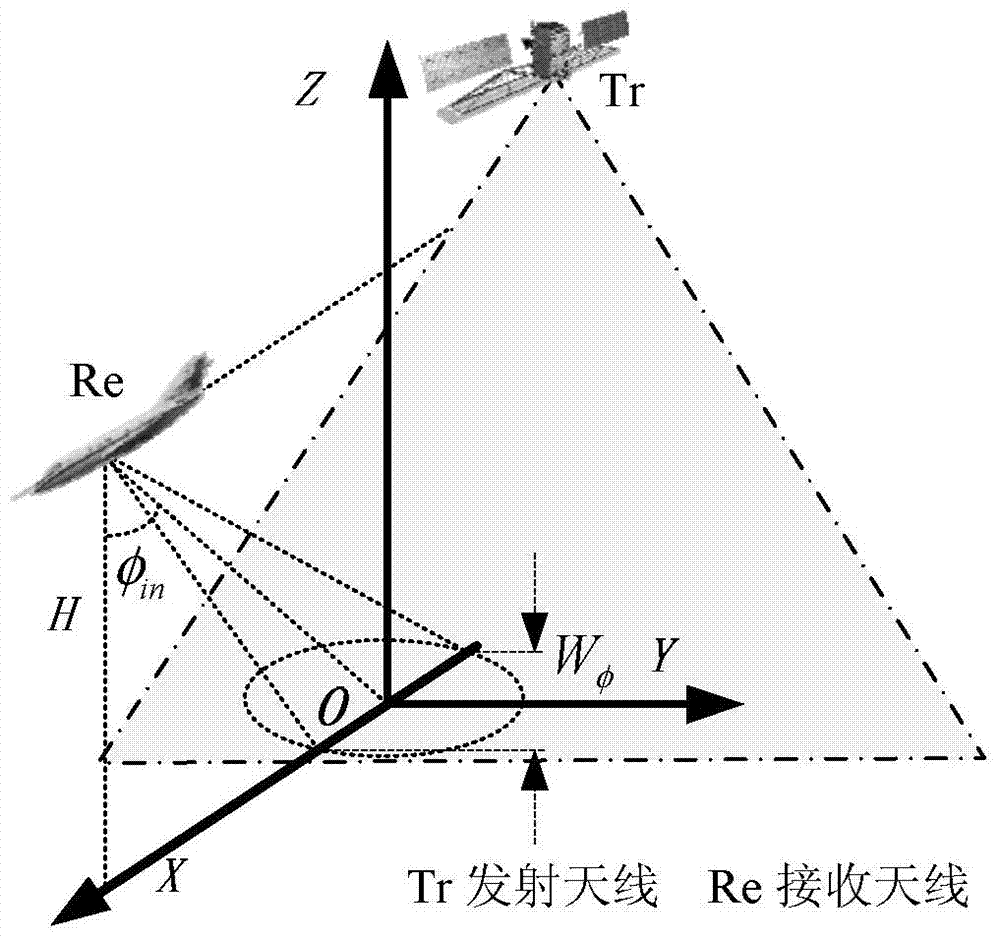Sliding type bistatic circumferential synthetic aperture radar imaging method
A synthetic aperture radar, sliding type technology, applied in the field of microwave imaging technology for earth observation, can solve the problem of inability to obtain non-backscattering information, inability to obtain non-backscattering characteristics of observation targets, and inability to realize large-stripe High-resolution omnidirectional imaging observation and other issues, to achieve the effect of data acquisition and imaging processing, and the acquisition of non-backscattering characteristics
- Summary
- Abstract
- Description
- Claims
- Application Information
AI Technical Summary
Problems solved by technology
Method used
Image
Examples
Embodiment Construction
[0016] In order to make the objectives, technical solutions and advantages of the present invention clearer, the present invention will be further described in detail below with reference to specific embodiments and accompanying drawings.
[0017] like figure 1 As shown, the present invention provides a sliding dual-station circumferential synthetic aperture radar imaging method, which is the same as conventional circumferential synthetic aperture radar imaging (such as figure 1 Sliding Bi-static CSAR (S-BiCSAR for short) transmits signals through a stationary or slow-moving platform carrying a radar transmitter subsystem at high altitude, and the airborne platform carries The receiver subsystem "slides" forward, e.g. figure 2 As shown in the figure, it can realize not only the acquisition of non-backscattering characteristics, but also the omnidirectional observation of the observation area, and the acquisition of large-area high-resolution images at the same time.
[0018...
PUM
 Login to View More
Login to View More Abstract
Description
Claims
Application Information
 Login to View More
Login to View More - R&D
- Intellectual Property
- Life Sciences
- Materials
- Tech Scout
- Unparalleled Data Quality
- Higher Quality Content
- 60% Fewer Hallucinations
Browse by: Latest US Patents, China's latest patents, Technical Efficacy Thesaurus, Application Domain, Technology Topic, Popular Technical Reports.
© 2025 PatSnap. All rights reserved.Legal|Privacy policy|Modern Slavery Act Transparency Statement|Sitemap|About US| Contact US: help@patsnap.com



